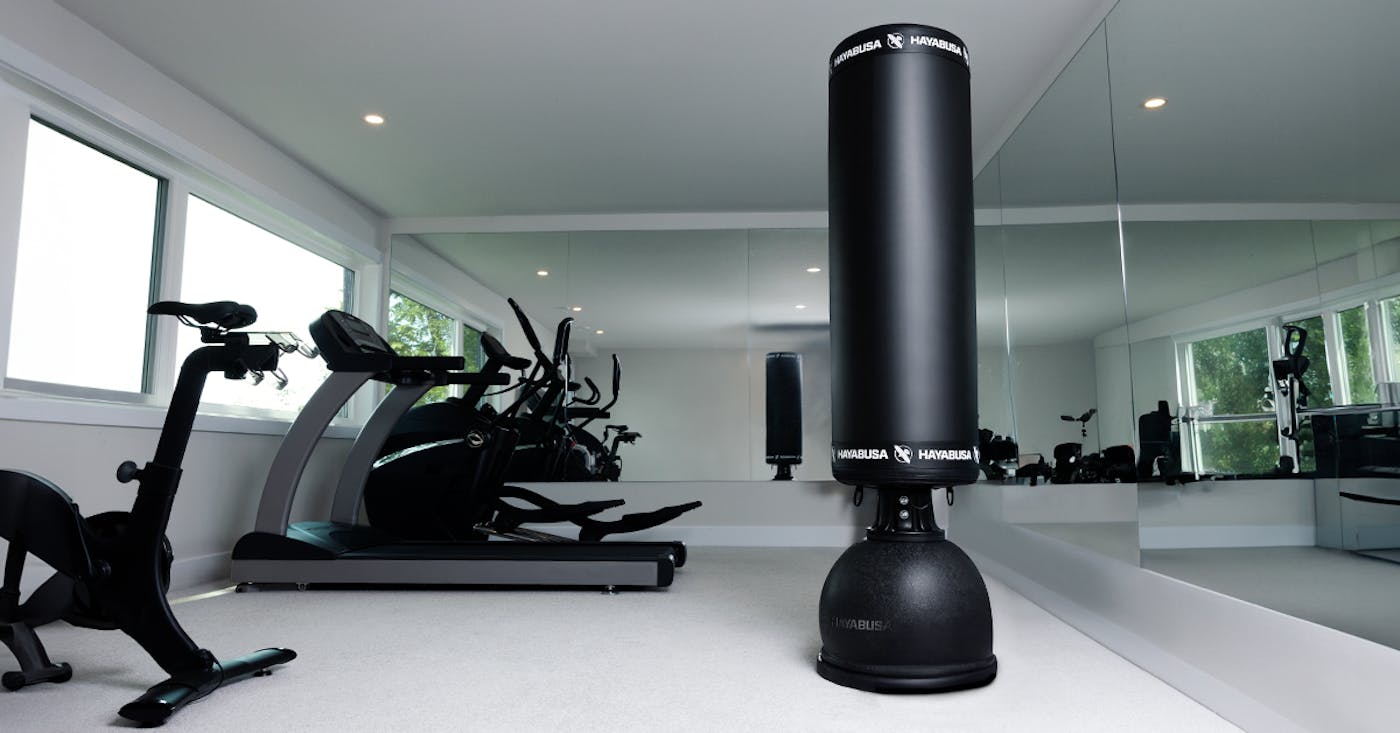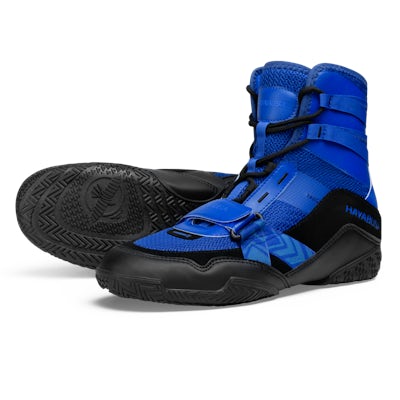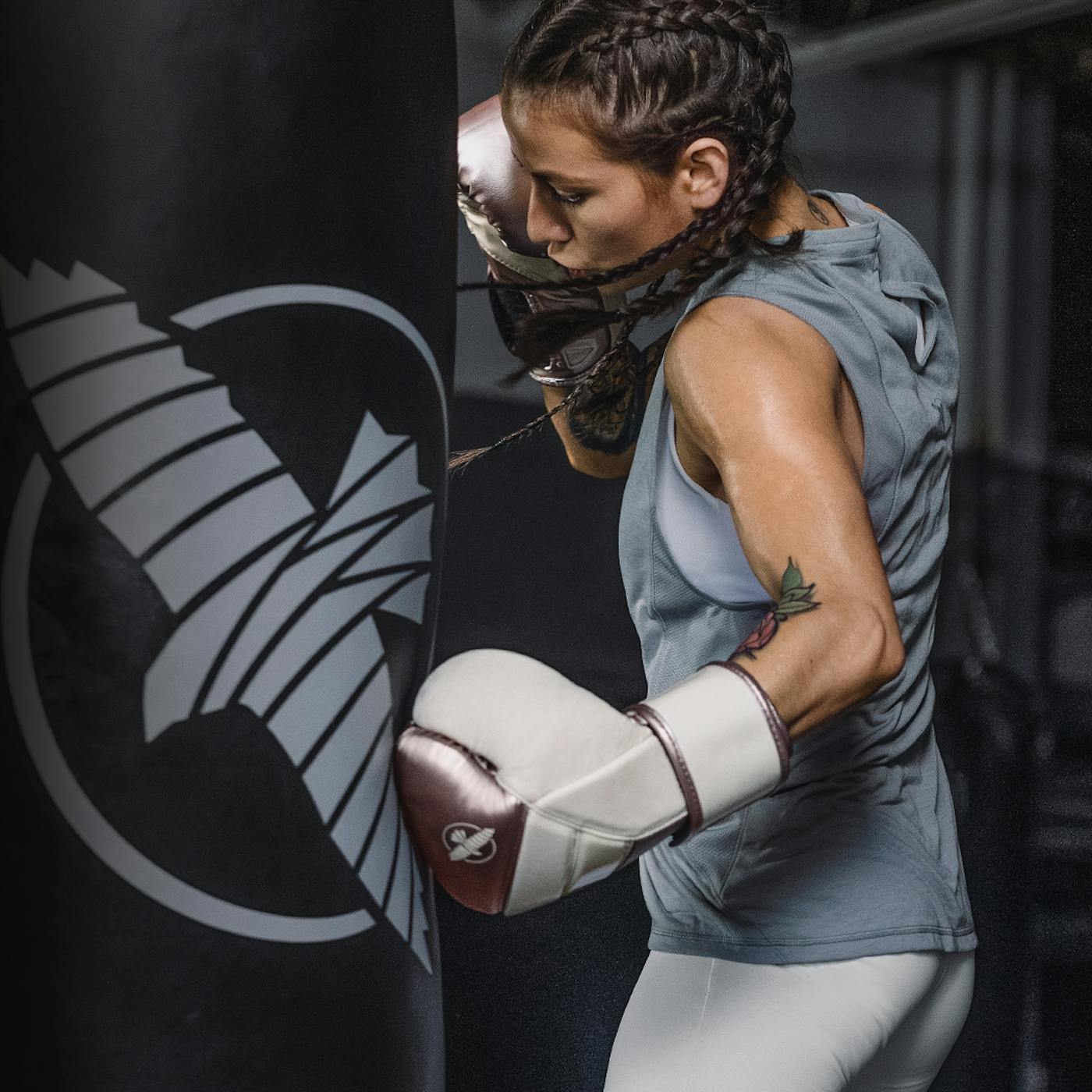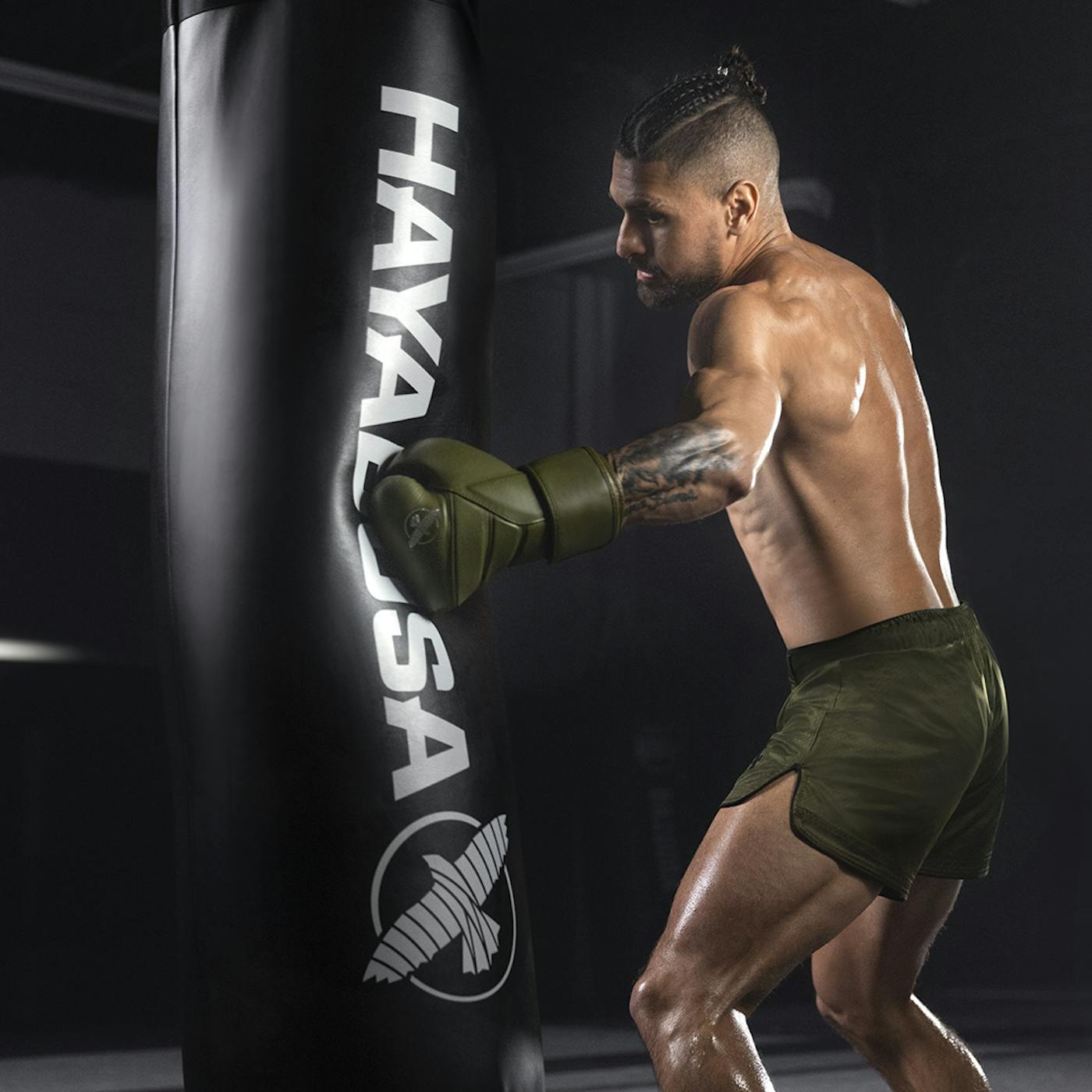Whether you’re a beginner or an experienced fighter, choosing the right punching bag is essential for enhancing your training and optimizing your performance.
Several factors must be considered, including the size and weight of the bag, as well as its construction and style. In this punching bag buyer’s guide, we’ll outline what you need to know to make a decision that aligns with your boxing goals.
By investing in a punching bag, you can extend your gym sessions right in the comfort of your own home.
Determining the Right Punching Bag by Size and Weight
A punching bag size guide is determined by your skill level and how you plan to use the bag to train.
Do you want to hyper-focus on developing speed? Or, do you need equipment that will aid in your full-body workout? Here’s a look at the different styles of bags and how each is beneficial.
Heavy Punching Bags
Hayabusa’s Heavy Bag is designed for all-around power training, providing excellent resistance, particularly for MMA and Muay Thai practitioners executing low kicks.
Heavy punching bags hang from the ceiling and range between four and six feet. True to their name, each weighs at least 100 lbs. or more. These are ideal for full-body workouts and practicing kick and punch combinations.
The height and weight are effective in building endurance and power as you mimic hitting the target areas of an opponent. Also, the stability and heft of the heavy bag add extra resistance to gain strength and punching precision.

Lighter Punching Bags
On the other hand, smaller bags are between two and four feet and weigh between 50-70 lbs. are better suited when focusing on hand strikes and improving precision. They are used for training to develop speed, accuracy, and agility.
Their bounce-back factor is more noticeable than what you’ll experience with a 100-lb. heavy bag which also helps with footwork drills. These are often used by more experienced boxers who want to hone their technique and develop skills.
Comparing Punching Bag Materials for Comfort and Durability
When training with a heavy bag, it’s crucial to invest in quality construction that can withstand intense rounds of punches and kicks without breaking down. Also, consider the level of bag maintenance and comfort between the different materials.
Outer Layer: Is Natural or Synthetic Leather Better?
When it comes to leather vs. synthetic punching bags, there are pros and cons to both types of material.
Natural leather provides superior durability with a soft, comfortable feel but requires regular maintenance. Alternatively, synthetic leather is more affordable, easier to maintain, and still offers high durability.
Hayabusa punching bags use premium synthetic leather, designed to withstand daily use without losing their shape or splitting.
Some fighters also prefer canvas or vinyl options. Canvas bags aren’t as durable and often lose their shape more quickly. Plus, they easily become dirty with use and are hard to clean.
Whereas, vinyl is easier to clean but can also wear over time and aren’t as flexible as other materials. There are several options to choose from, so consider which is the best fit for your home.

Inner Layer: Should I Choose Soft or Hard Filling?
A boxing bag’s filling is important for hand protection and refining your punches.
Soft filling is best for beginners. It allows athletes to focus on endurance training as they improve their form. Plus, it offers more give to the bag, reducing the risk of injury.
Whereas, medium to hard fillings are suggested for intermediate or advanced athletes. Denser filling provides resistance to improve power and muscle conditioning.
Hayabusa punching bags are designed for more experienced users, with a toughness tested in gyms worldwide and a construction that balances softness with strength.
Hanging Punching Bags vs. Free-Standing Punching Bags
In addition to the size, weight, and bag construction, deciding between a hanging and free-standing punching bag will help to narrow down your choices.
Hanging punching bags are most commonly used in traditional boxing gyms. They are beneficial for all levels of training to practice punch and kick combinations and perfect techniques.
For at-home use, a garage or basement is a good place for a heavy bag setup, though it’s important to consider if your everyday gym can support a heavy bag mounted from the ceiling.
A free-standing heavy bag works well for small spaces and is easy to set up. Though not as stable as a hanging heavy bag when striking hard, it’s an optimal option for beginners or those who want the flexibility of moving their bag to different areas.
How to Choose a Punching Bag: FAQs
Even if you’re well-versed in heavy bag training at a commercial gym, there are still factors to consider when setting up one at home.
Here are answers to frequently asked questions about how to choose a punching bag so you can secure a personalized setup to support your training needs.
What weight should my punching bag be?
Heavy bags weigh 100 lbs. or more and are ideal for full-body workouts and building strength and endurance. Lighter bags, usually between 50-70 lbs., still have enough weight to test resistance but are designed with a smaller target to focus on speed and accuracy.
Most boxers train on both types of bags, though consider what you’ll want to use it for most and what your home has room for.
How long will my punching bag last?
The best heavy punching bag for home use can last 8-10 years and beyond. It’s important to invest in a bag made of quality materials durable enough to handle intense, daily workouts.
Also, extend its lifespan by following a few simple punching bag maintenance tips:
- Wipe down after every use to avoid mildew and grime from building up.
- Keep it in a temperature-regulated area so the material doesn’t get too hot or cold, which can cause it to crack and/or lose its shape.
- Rotate the bag and/or your positioning to balance out the areas that are getting hit the most.
Hayabusa E1 Boxing Gloves

Hayabusa Deluxe Hand Wraps

Hayabusa 6ft Freestanding Heavy Bag

Hayabusa Strike Boxing Shoes

Can I use the same punching bag for MMA training as I do for boxing?
Boxing training bags are versatile, but a heavier punching bag for MMA is recommended. Free-standing heavy bags are great for fighters practicing low kicks while hanging wrecking ball bags are optimal for practicing different punch combinations.
Will I need to buy a mount for my heavy bag?
Not necessarily. Heavy bags can be hung from horizontal beams (known as joists). However, because joists are designed to maintain the structural integrity of your home, you’ll want to check if the material and construction can support at least four times the heavy bag weight.
Alternatively, a heavy bag can be hung from a ceiling or wall mount intended for this purpose. Or, you can choose a free-standing heavy bag if you want the option of easily moving the bag around.
What other training equipment will I need?
It’s recommended to always use hand protection for punching bag workouts. This includes at least boxing gloves and hand wraps. Though the proper apparel is also important including boxing shorts, boxing shoes, and head, groin, and mouth protection.
Check out the entire Hayabusa Pro Boxing collection for all your premium boxing gear needs.
Hayabusa: The Best Heavy Bag Choice for Your Training Needs
Hayabusa’s high-quality, ultra-durable punching bags and accessories are the ultimate investment for all levels of athletes. With several options to choose from, you can secure the perfect bag for your training regimen to keep up with your workouts at home.
Shop Hayabusa’s Punching Bags Collection today and take your training to the next level.




